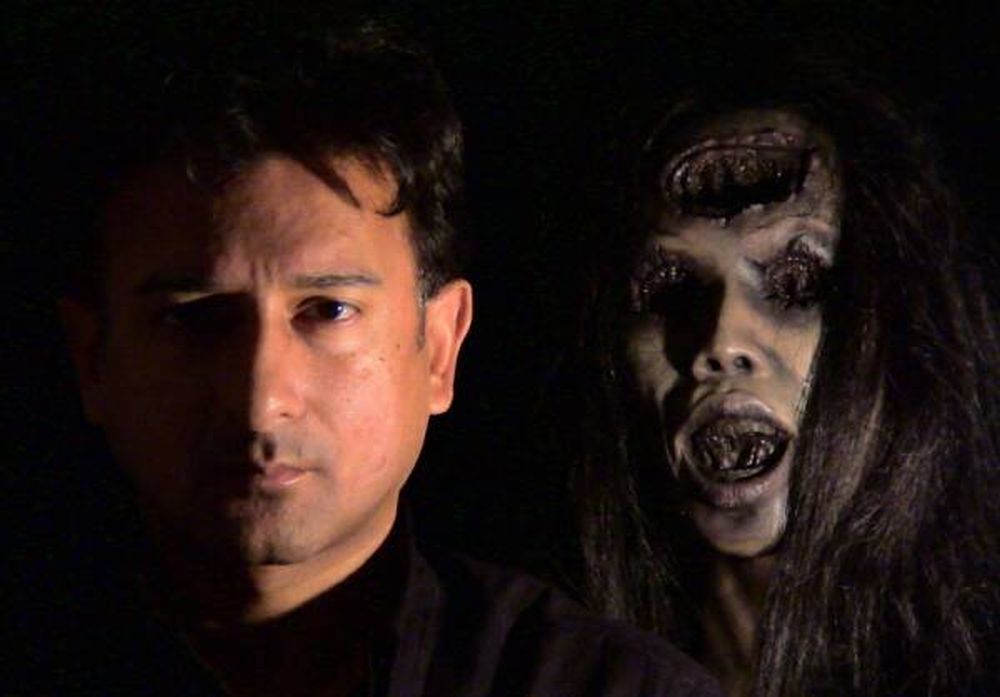Mark Duffield interview
In Thai Spirits
The Ghost of Mae Nak tells the story of Nak and Mak, a newly-wedded couple who find themselves haunted by the restless spirit of a woman from the past, which is now trapped inside an amulet. When Mak is involved in an accident, it’s up to his wife to resolve the mystery, as her husband’s only hope. It’s a successful fusion of Hollywood film-making with Eastern horror, taking the “dark-haired ghost girl” motif, familiar from many recent entries, but adding some new elements and delivering it with Western polish – as well as impressive moments of gore! We talked to writer/director Mark Duffield about the legend behind the film, and the difficulties of making a movie in a language you don’t actually speak…
Trash City: Tell us about your background – and how does a British cinematographer end up making a Thai horror film?
Mark Duffield: I was born in India, raised and educated in England and I live in London. My passion for film developed at an early age and I made several short films on 8mm, 16mm and video. I started professionally as a stills photographer and developed my passion for cinematography. I built up a showreel and eventually got to work on 35mm feature films. I have worked as a cinematographer on 8 British feature films. I have also developed my skills as a writer and have written and directed several short films. Recently I teamed up with Brian Clemens writer of 1960’s TV series The Avengers and writer/director of Captain Kronos, Vampire Hunter as well, as many other genre movies. Together we made a short film called Face to Face.
I first traveled to Thailand in 2001 to work on the British feature film Butterfly Man. In 2003 I was awarded Best Cinematographer at the Slamdunk Festival in Park City for my cinematography. During my stay in Thailand I became fascinated with Thai ghost stories and heard of a shrine that is devoted to a Thai ghost called Mae (Mother) Nak. I visited the shrine as was fascinated to see hundreds of Thai people pray to Mae Nak and ask her for a blessing or guidance.

TC: The legend was also used as the basis of Nang Nak, one of the biggest Thai films of all time. How would you say your film differs from that, or other versions of the story?
MD: The film was conceived because I became fascinated with the Mae Nak legend and her tragic love story. I also discovered that there had been many films about her over the last 50 years. I watched the definitive Mae Nak film, the period film Nang Nak, directed by Nonzi Nimibut. This film concluded with the ‘evil’ spirit of Mae Nak being held captive in a piece of bone cut from her forehead by an exorcist monk, and the bone was lost in time. It was here that I was inspired to write my script and continue the Mae Nak story. I feel that Ghost of Mae Nak is an unofficial continuation of Nang Nak so it was good to have a comparison or connection.
In Thailand Mae Nak is a legend and there are many stories about her. A lot of people believe the legend to be true and the monk who exorcised her did exist. The legend is as famous to Thailand as Dracula or Jack The Ripper is to the West. My film differs because it is a contemporary version set in present day Bangkok and told with my Western influence as writer and director. I was keen to show Mae Nak as a protector of the young newly wedded couple but also show the dark side of her terrorizing or cursing those who try to come between the couple.
Apart from some of the classic Mae Nak films of the 1950’s and the definitive Mae Nak period film Nang Nak, most Mae Nak films were hysterical horror comedies with very low production value. I felt I was doing something new and original so I was very excited by the script and the reaction I was getting from Thai industry professionals. I had total freedom to make my version and was totally supported by the Thai production and distribution companies. As a Western film writer and director I was keen to give the Mae Nak legend a Western or European feel. This would mean authentic casting, realistic locations, special effects and a different faster pace. I was not telling the Mae Nak legend again but introducing it into a contemporary modern setting and giving the Ghost of Mae Nak ‘closure’. She is a ghost who needs to find peace so she may be with her true love. I wanted to make a film that I felt was truthful to the legend and myself.
TC: Would it perhaps have been easier to take the script, and re-locate it to the UK or US? Was translating your story into Thai tricky?
MD: The Ghost of Mae Nak is based on a Thai ghost legend and I wanted to be truthful to that legend and make the film in Thailand. But your observation is accurate, in seeing the ease in making the film in the UK or US, this is because the story is a universal story and works in any part of the world. Translating my English language written script into to Thai was tricky because it was important for me to get an accurate translation and clarity in the story. This process took 12 weeks to do. With regards to re-locating the script in the UK or USA, I think it would be possible but it would mean reinventing the legend. I do own all the script rights and have an outline for an American version that is very original.
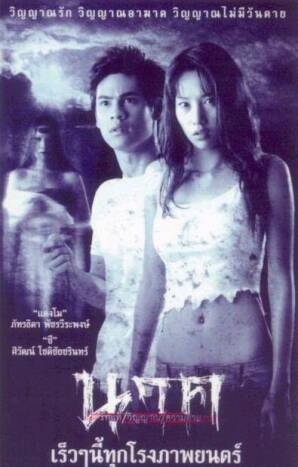
TC: I believe Pataratida Pacharawirapong is a pop singer and model in Thailand, without much movie experience – did you have any qualms about casting her in a film such as this?
MD: Yes, you are right: Pataratida Pacharawirapong (“Tangmo”) is a pop singer and model, but she has also acted in serious television dramas. I actually auditioned her on the set of one of her television soaps because of her tight schedule. I wanted to find lead actors who were the characters. A Thai casting agent and myself auditioned many new actors. We would look for new up-and-coming actors and luckily we were able to secure “C”, Siwat Chotchaicharin, to play Mak and “Tangmo” to play Nak. They had both worked in Thai television dramas so this was their first feature film. During the filming, they were both awarded ‘Best New Talent for Television’ which was a bonus for the Ghost. This brought a lot of attention to the film, which was great. What I really like about them is that I believe in their relationship and they look like they belong together; an important casting note for directors.
TC: The culture in Thailand seems much more spiritual than in the West – everyone seems open to the idea a restless spirit is involved. Was that part of the appeal of locating the film there, and are there any cultural references Western viewers might miss?
MD: I had spent some time in Thailand and got to know the culture well. I was fascinated by the ghost stories, Buddhist rituals and the very contemporary way of life people have there. I was keen to explore these themes in my script and researched and interviewed many Thai people about their experiences and beliefs. The importance of family, wedding ceremonies, use of language and exorcism rituals made them vital to get right. It took a lot of work but it was exciting and fun to do. Thai people do believe in ghosts and are very superstitious – ot’s common practice for Thais to wear Buddhist amulets to protect them from evil spirits. Some of my crew constantly wore them to protect them from Mae Nak.
Before we began filming, the entire Ghost of Mae Nak cast and crew went to the Mae Nak shrine to make an offering and ask for permission to make a film about her. This is an actual shrine to Mae Nak where many Thai people ask her for guidance and blessing. I felt she gave us her blessing as the filming went very smoothly and it was a joy to direct. The film was released all over Thailand and went to #3 in the Thai box-office. There was a big media attended Premiere in Bangkok. The distribution company actually built a Mae Nak shrine outside the cinema on the sidewalk. They had an official Buddhist consecration ceremony with monks and the cast attending, that was headline news on Thai TV. This was to pay respects to Mae Nak and bring good luck to the film; people took the shrine very seriously and would even pray in front of it.
As for a Thai cultural reference, I was keen to show and include the Fortune Teller in the story. It is normal practice for newly wedded Thai couples and Thais in general to visit fortune tellers for astrological guidance in all occasions. Thanapath Si-Ngamrath the actor who played Master Tring is a well-known celebrated Fortune Teller and I was delighted to have him in the film. He brought some of his authentic amulets and ritual objects to use in his scene.
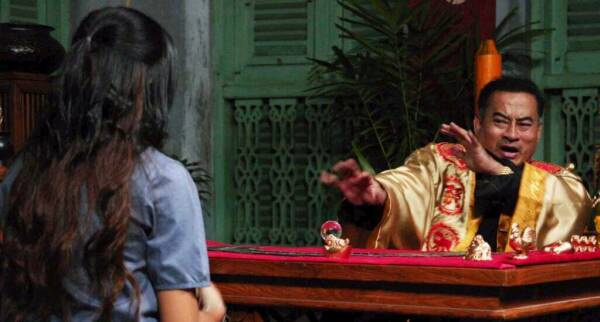
TC: How does shooting a film in Thailand compare to shooting one in the West? Were there any unexpected difficulties?
MD: As a British director making a horror movie in Thailand I faced many challenges. The most obvious one is the language. I don’t speak Thai even though I had written and directed a Thai-based horror story. At first it was difficult, but filmmaking is a slow process and we eventually learned to find ways to communicate. Of course I had translators, and there was the script, which was written in English and translated perfectly into Thai to work from. As a director I had to be precise about what I wanted and always double-checked the information was clearly conveyed. A film director is highly-regarded in Thailand which also means it becomes a responsible role.
Bangkok film crews are highly-skilled, so the film making process was no different to making a movie in the West and the language of filmmaking is universal. I guess the biggest difficulty and challenge for me was directing a movie in a language that I don’t speak, but I was congratulated by many Thai people, film industry professionals and the movie going audiences on how successful the film was. I guess the biggest “unexpected” event that took place during the filming was that it was a wonderful trouble-free shoot. Filmmaking can be a bit like walking a tightrope, and things often go wrong during it, but I felt as though Mae Nak wanted us to make this film.
TC: The Bangkok that you show is different from the one usually portrayed in the West – it’s very much a “working” city, chaotic, crowded and lived-in. Was that a conscious choice?
MD: Yes. I was keen to show a modern side of Bangkok that was truthful to my experience and to the story I wanted to tell. I am pleased that you have observed my choice. I hope my vision of Bangkok will show Westerners a realistic and exciting portrayal of Thailand that we don’t usually see.
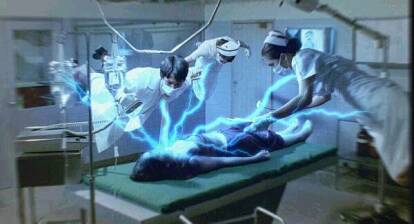
TC: The scene everyone remembers is the one involving the falling pane of glass. What was the inspiration for that, and how did you go about carrying it out?
MD: The sheet of glass death scene was inspired by The Omen. I wanted to try and further that idea. Originally I was going to have my victim sliced in three but then I saw Final Destination 2 had a similar freak death-scene. [TC: Amusingly, those are the exact two mentioned in my review, written before this interview!] I then went to an exhibition called Body Worlds in which German scientist/artist Gunther Von Hagens displays dissected human bodies in his Plastination process. One display showed a body being sliced down the middle and I saw the potential and came up with the concept.
We filmed this scene at the Tobacco Studios backlot where we built a street set lined with market stalls and traffic. Nirun Changklang, the actor who played Ant, had to visit the effects company First Ideas to have made a full life-size cast of his entire body in latex. The authentic looking body-cast was literally sliced in half from his head through to his groin and then joined back together with a hinge. On set the stunt company Baan Rig wired up the two large sheets of glass (Plexiglas) to fall on cue. The life-size Ant figure was treated like a giant puppet with wirework to support him and control the split. Later the CGI effects company Digital Lab would enhance this with computer generated wire removal and digital blood. The scene also required a stunt vehicle and driver for the screeching bus, stunt extras to jump out of the way, a trained dog to pick up Ant’s severed arm, and a bucket full of animal offal to add grossness to the “Grand Guignol” scene. The Ghost of Mae Nak DVD will feature my Director’s Video Diary as an extra that will visually show how the death scenes were filmed as well as the day-to-day film making process.
TC: I kept expecting the character of Kong to meet a similarly gruesome fate, but he almost vanished from the movie, in a way that seemed somewhat sudden; was there an intention to do more with him?
MD: Originally Kong the stalker was going to die; this was written in the script and filmed. But I decided during the edit that his death would only make the ghost vengeful so I cut the scene out, and in the finished film his fate is to stare at the empty grave of Mae Nak. Kong’s death scene involved the following: Kong stares at the empty grave of Mae Nak’s skeleton. He goes to leave but discovers the metal gate is shut tight. He then sees the pickax on the other side of the grave. He returns to the grave, jumps over it and trips and falls with his head narrowly missing the sharp point of the pickax. He straightens himself up, grabs the pickax and turns to see the ghost of Mae Nak at the gate. He is mesmerized by her and steps forward, falling into the open grave. The pickax he holds impales his thigh pinning him down. He looks up from the grave screaming and calling for help but sees the ghost standing over him with her ‘death face’. The ground rumbles, earth crumbles and Kong is buried alive. The grave is filled and camouflaged with falling leaves.
TC: Did you make the film principally for the Thai market, with international distribution a secondary aim, or was it the other way around?
MD: I made the film for the Thai and International markets. I am a Western filmmaker so I was keen to get my film seen internationally. I also felt I had written a universal story that had a uniqueness for an Asian horror film. Surprisingly Ghost of Mae Nak has been selected for several International film festivals across the world and not just the ‘horror/fantasy’ festivals. It has had a great reception from a wide range of audiences.
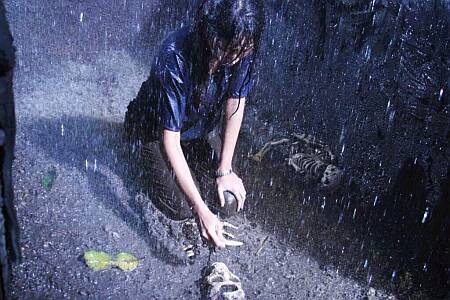
TC: This marked your feature-directing debut, as opposed to being a cinematographer. How was the experience, and what was the biggest thing you learned from it?
MD: Yes, Ghost of Mae Nak is my first feature as writer and director and cinematographer, and I had a wonderful journey making it. The speed in which the film developed was like doing a studio movie. The script took three months to write and was funded with a Thai distribution deal a few months after that. I spent four months in pre-production, six weeks production and four months post production. So, from concept to the Bangkok premiere was exactly two years and the Tartan USA DVD release will complete the third year.
Being a first time director and handling the cinematography was exciting. Cinematography is a passion and I had shot eight feature films before this. I think visually, so it was a joy to light my own film. Because this was a big production on a low budget with its many locations and sets, I was able to work very fast and concentrate on lighting just the areas I knew I would film. However, I did have a camera operator, Ryan Goddard, a Canadian based in Bangkok, who was excellent at handling the 35mm camera, which can be physically demanding. I would have no problem working with a cinematographer on my next film – if that is the case, I’d support them 100% as I know what they have to go through to achieve results. And the biggest thing I learned is, that it would be fun to do again – but ideally it would be nice to have more time and budget like the Hollywood movies do.
TC: What are your future plans? Do you plan to make further movies in Thailand?
MD: I am writing an exciting new horror script set in the US in English language. I do have several other spec horror scripts I have written and I am also rewriting or fine-tuning them. This is something I always do with my scripts until they get made. My subjects are vampires, the occult + paranormal and witches; I do have a new Thai/Asian horror script but with Western characters and English language – it’s a great idea. I am keen to develop my passion for horror/fantasy films, and have some great, original ideas; however, I’m afraid I don’t want to reveal anything about my scripts as yet, but I will keep you posted.
Finally, I would like to thank Trash City for showing interest in the Ghost of Mae Nak and myself as writer and director. I would like to thank the fans of Ghost of Mae Nak: I appreciate your support. For those who have not seen it, I hope you will give the Ghost a chance, and allow yourself to be taken for a ghostly thrill in Bangkok, Thailand. It will be released on DVD, with extras, by the Tartan USA Asian Extreme label on 10th October. I hope fans will want to learn more about the making, and newcomers will discover a new horror legend from Thailand in the Ghost of Mae Nak.
[Many thanks to Debbi at Tartan for arranging the interview, and Mark for his detailed responses]
